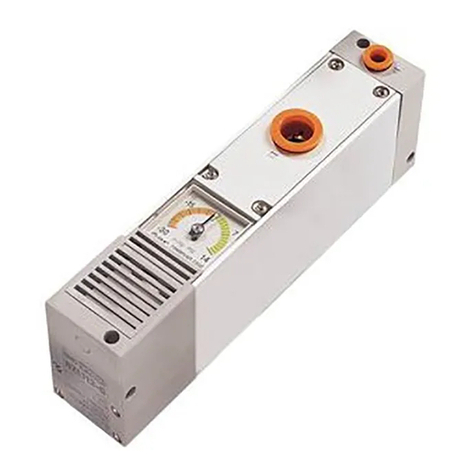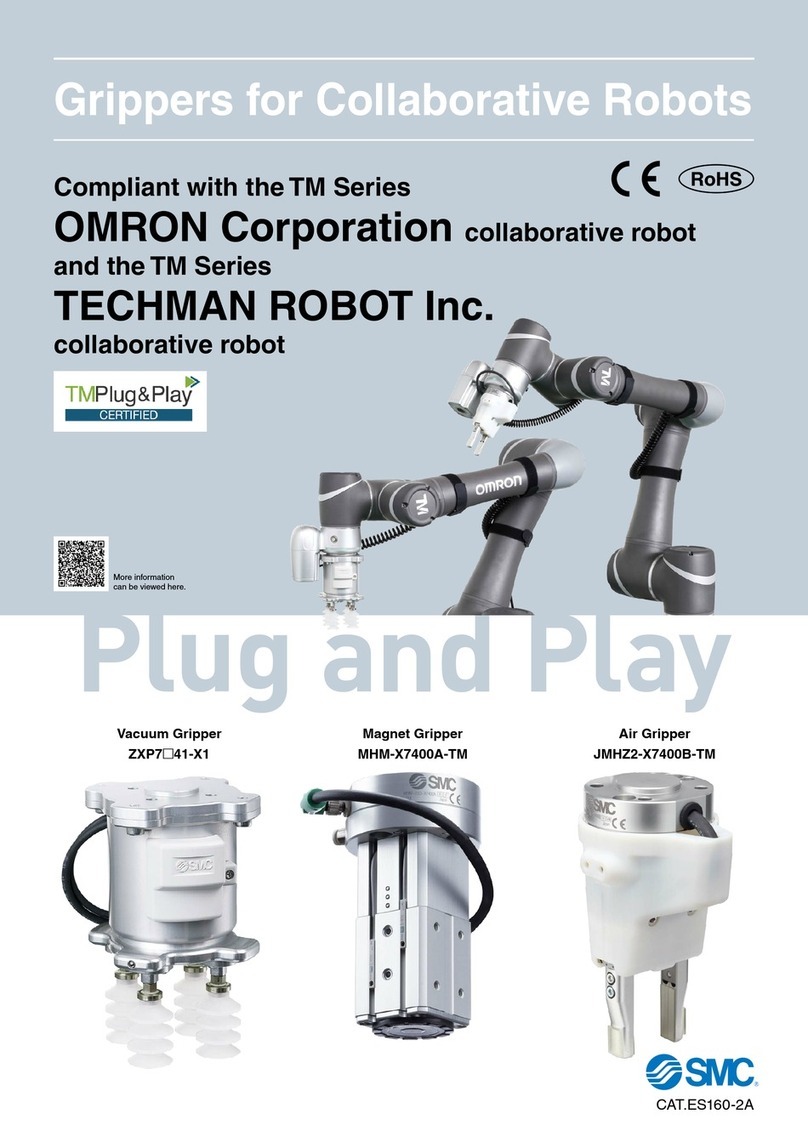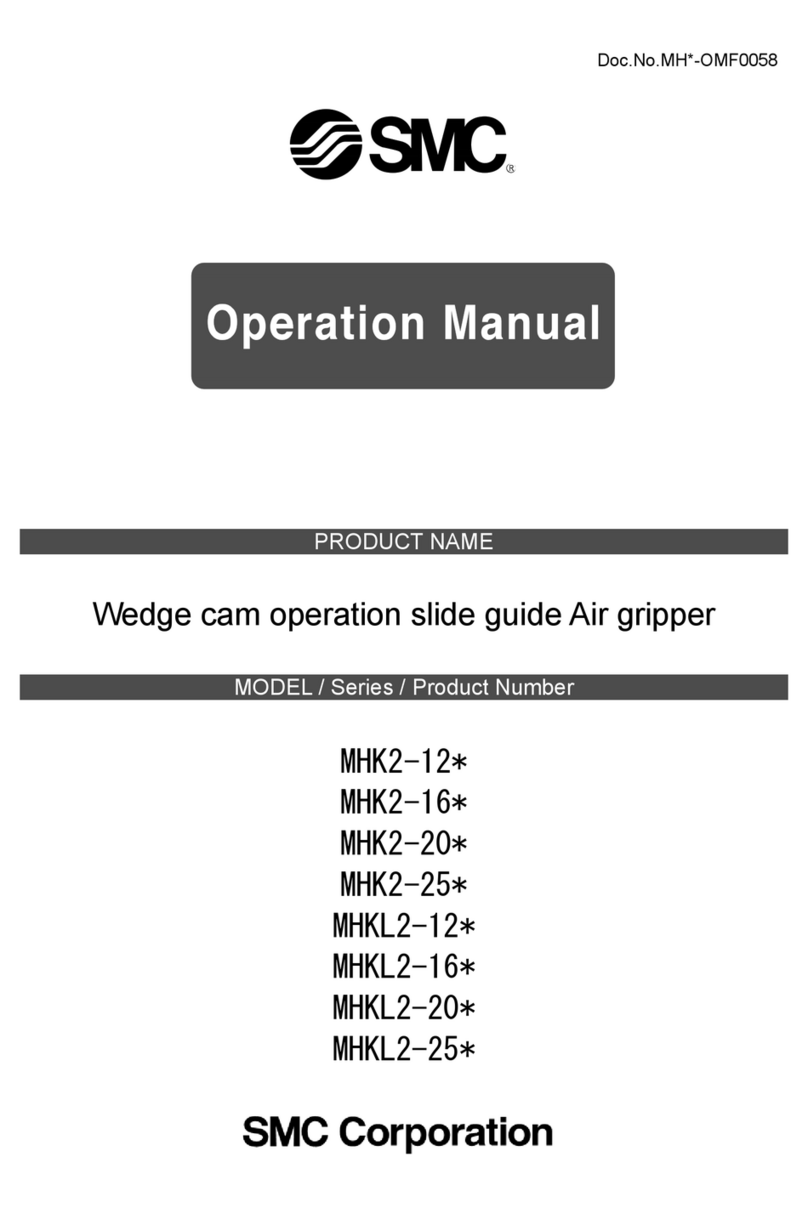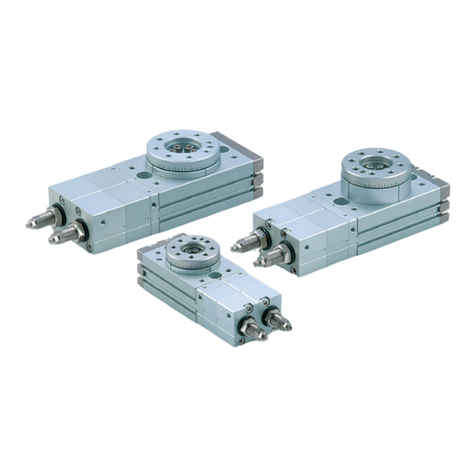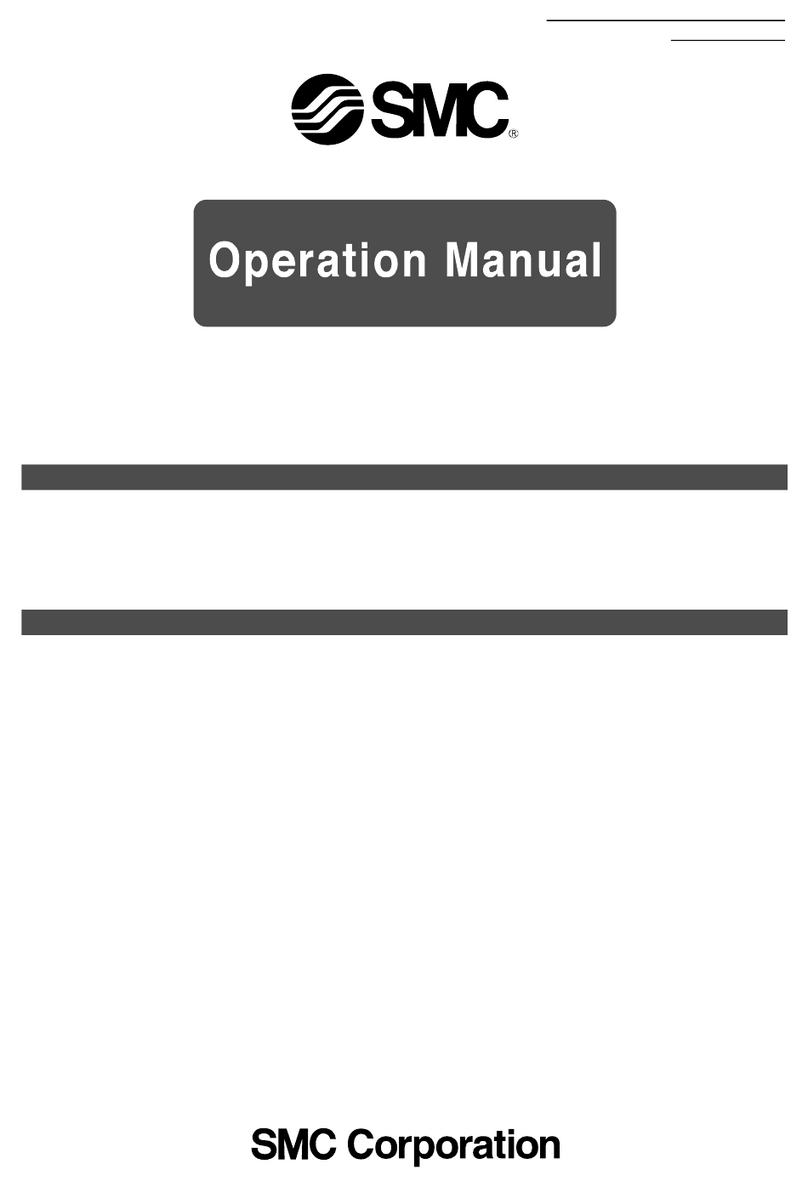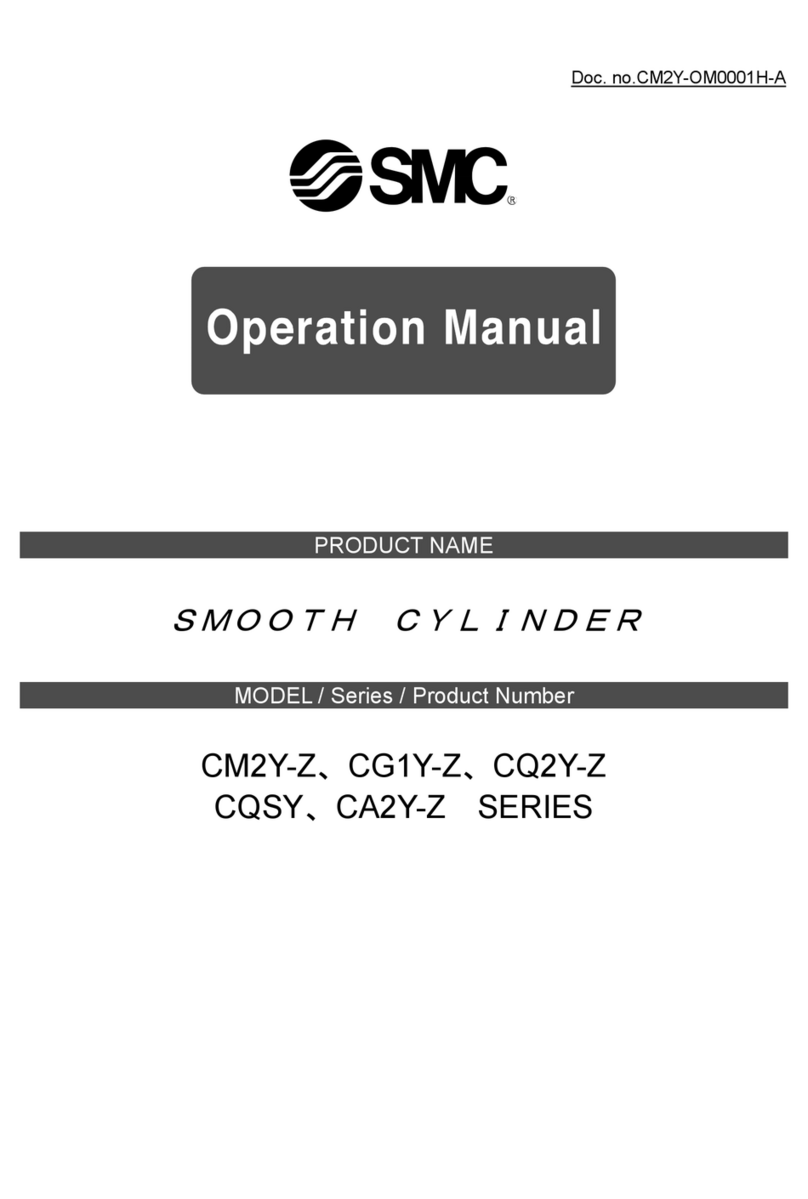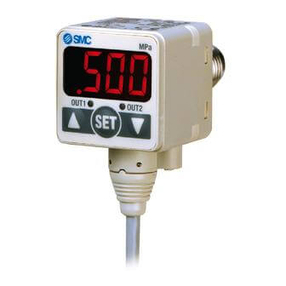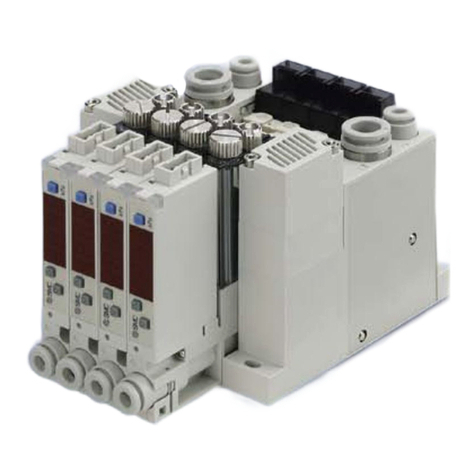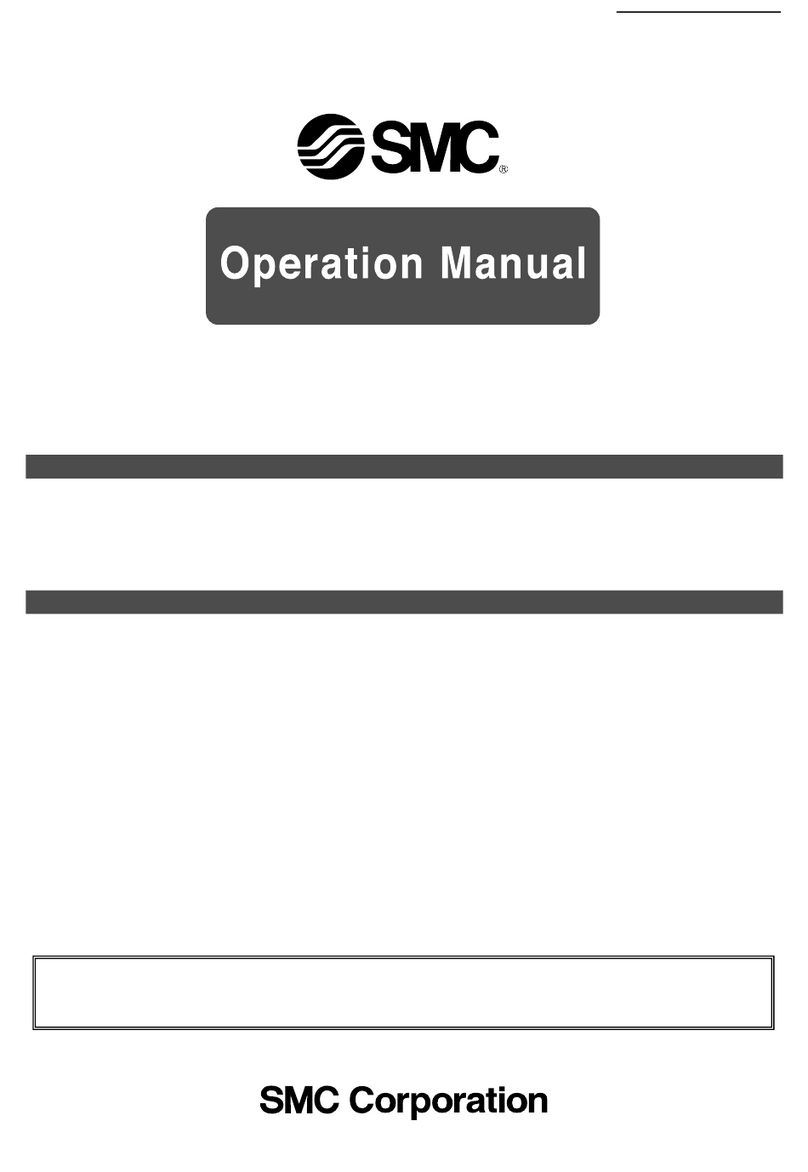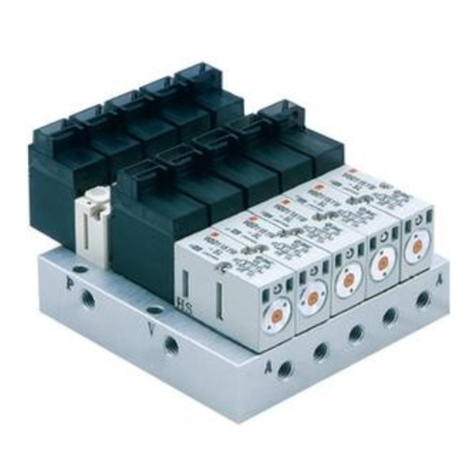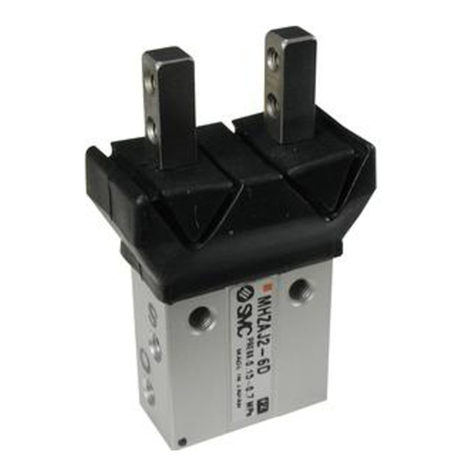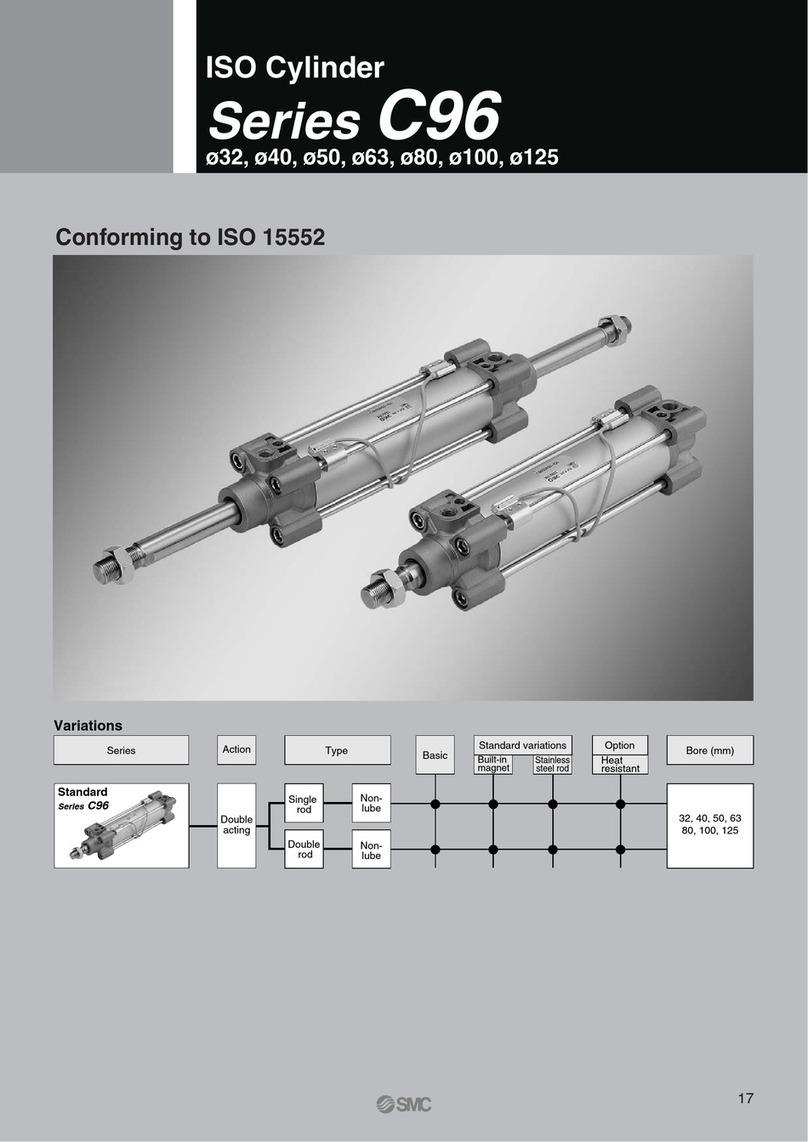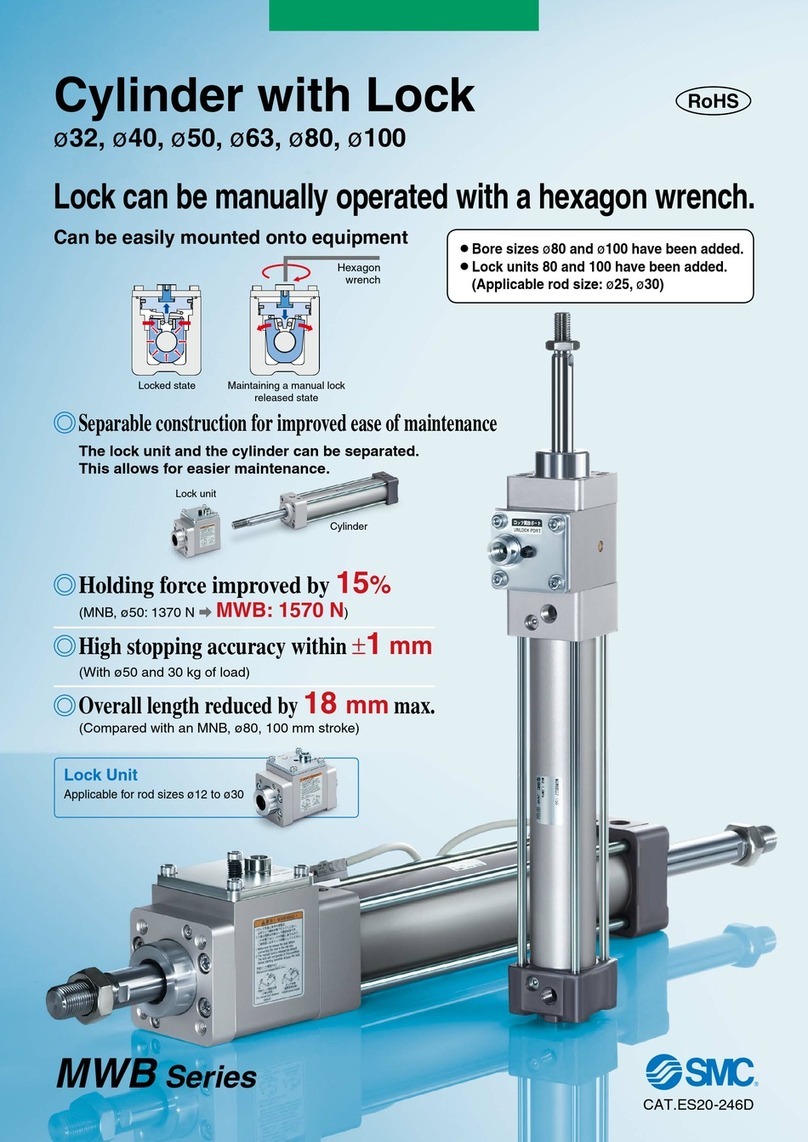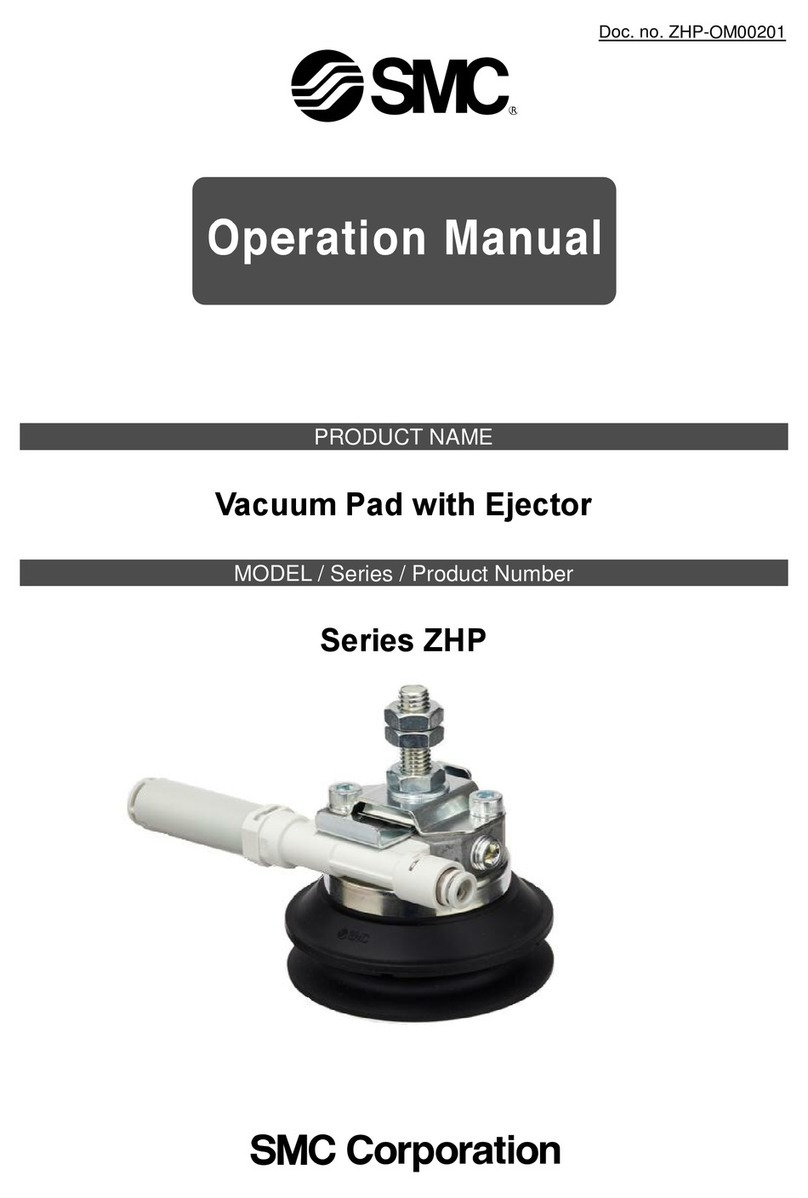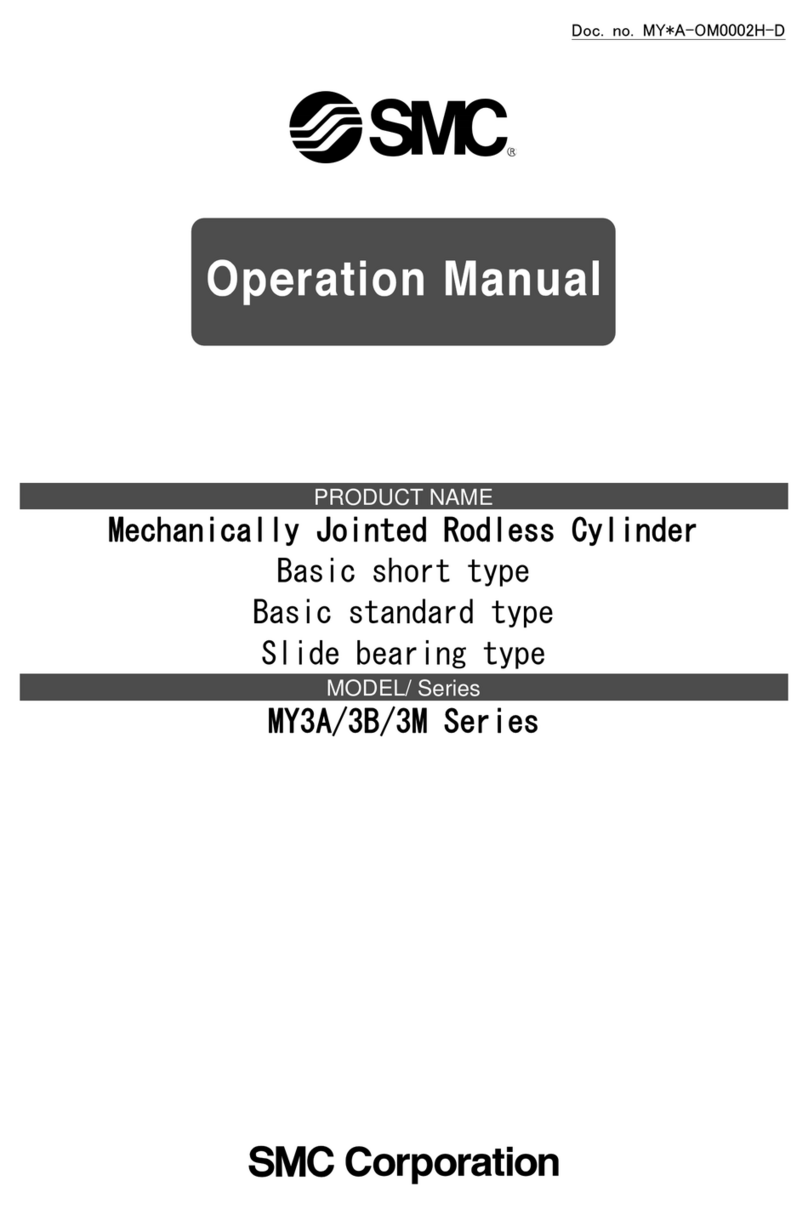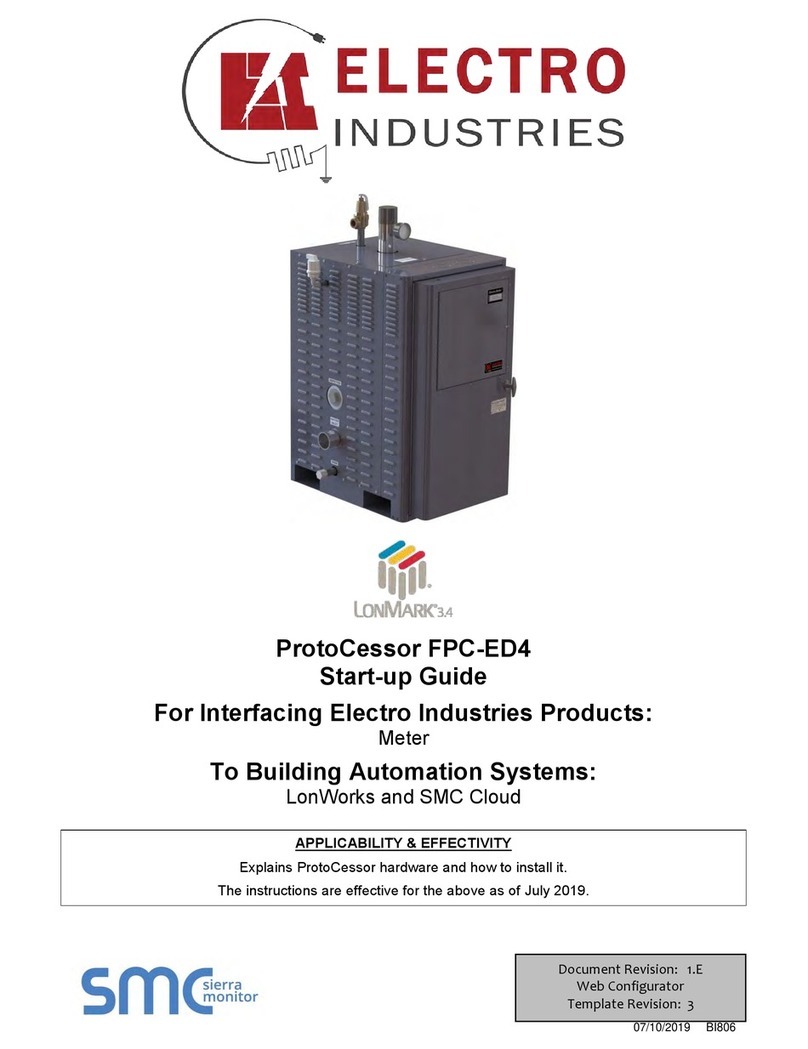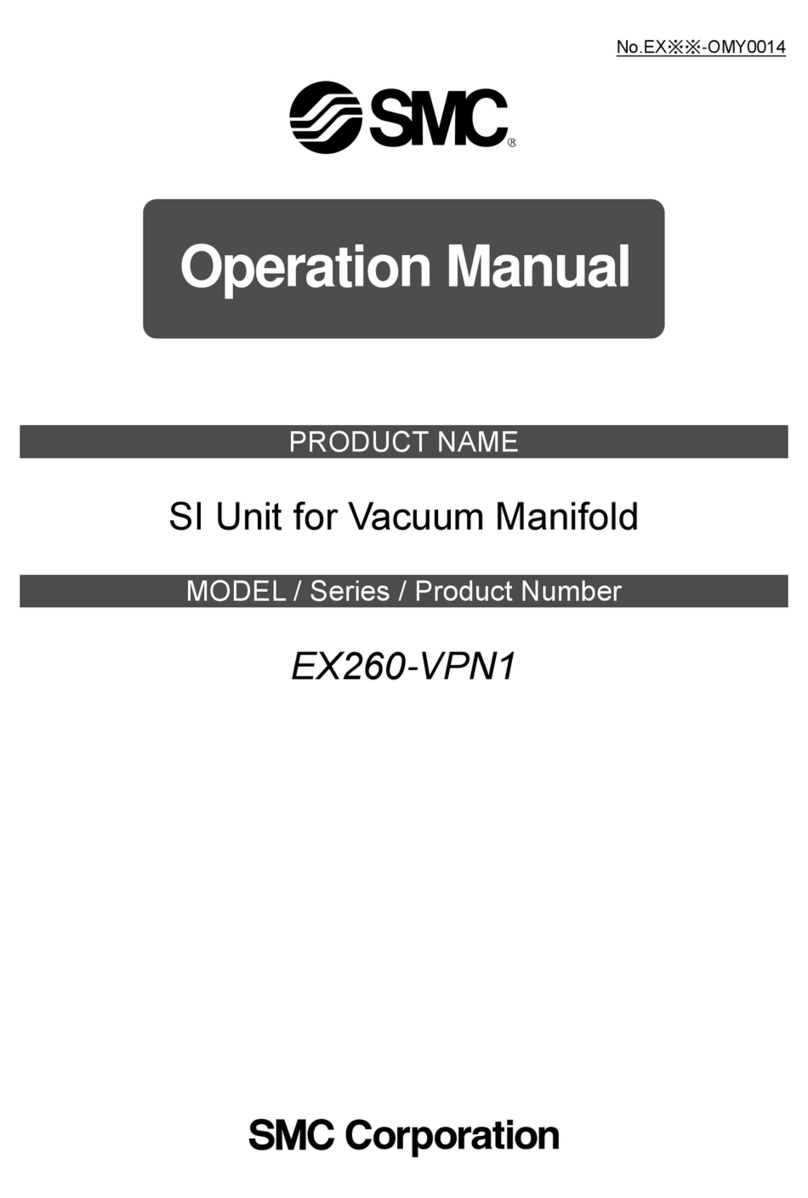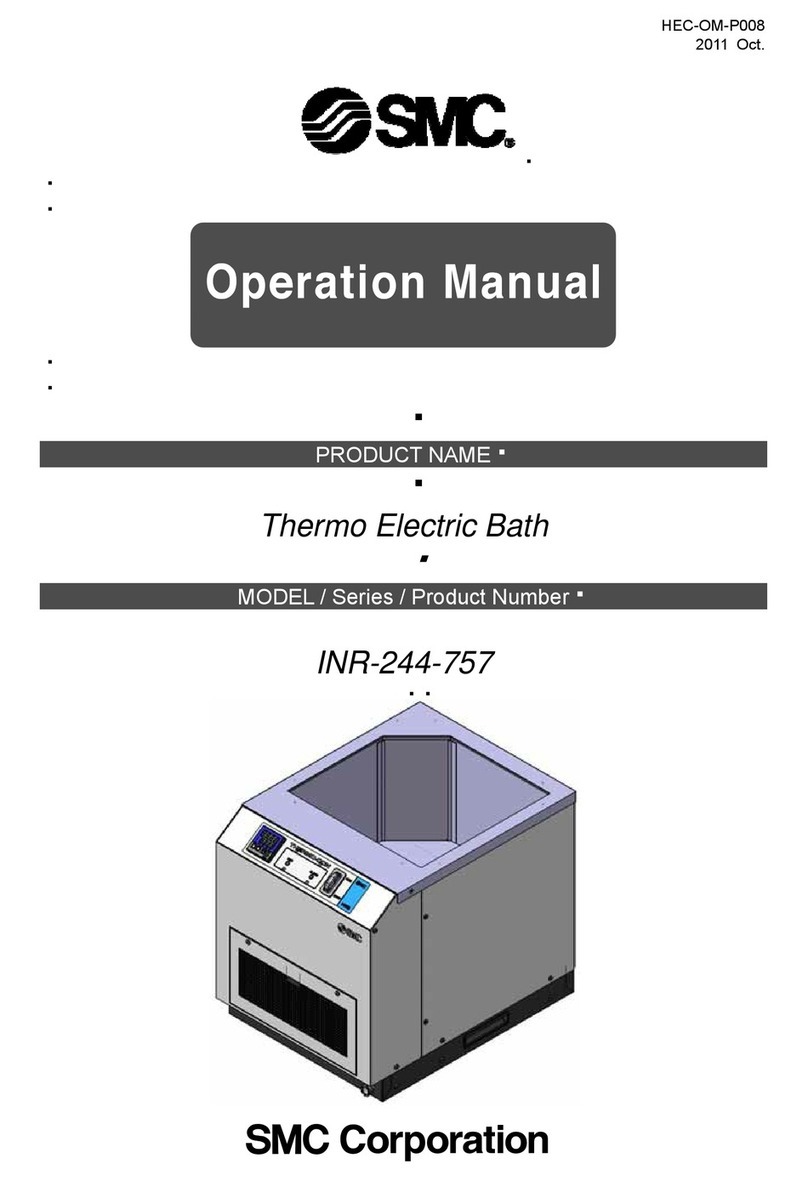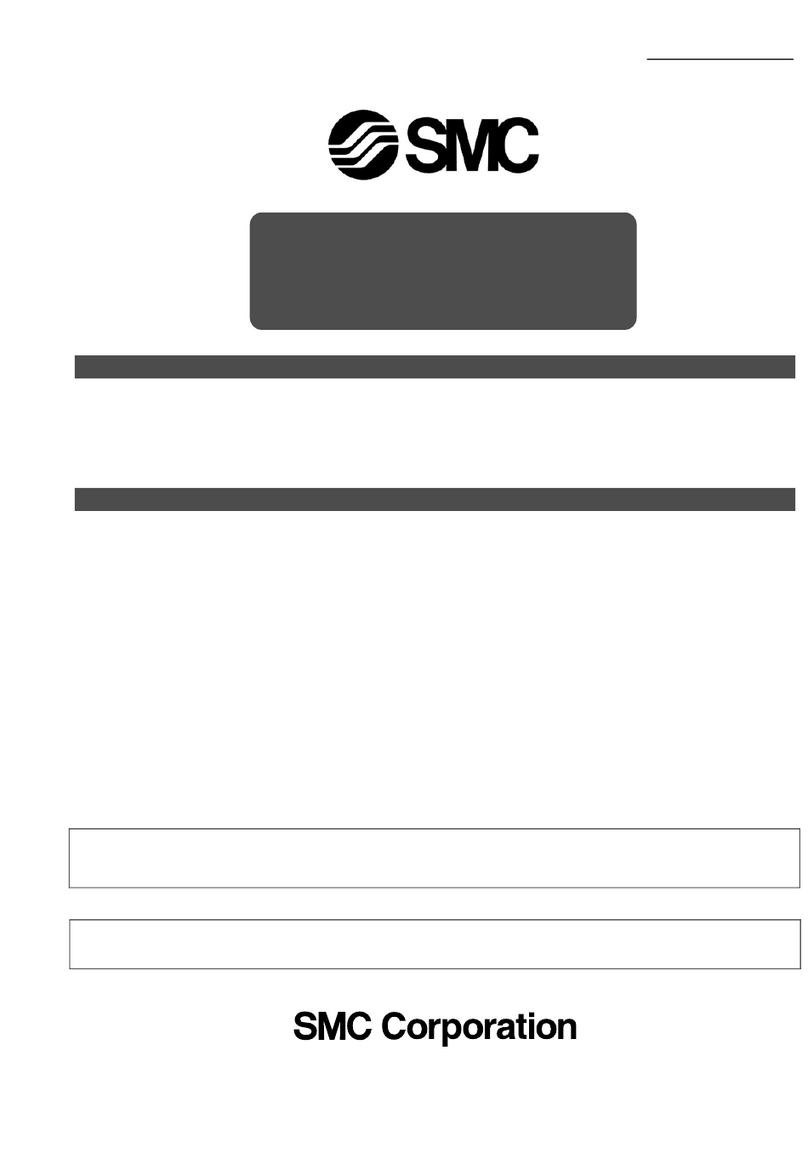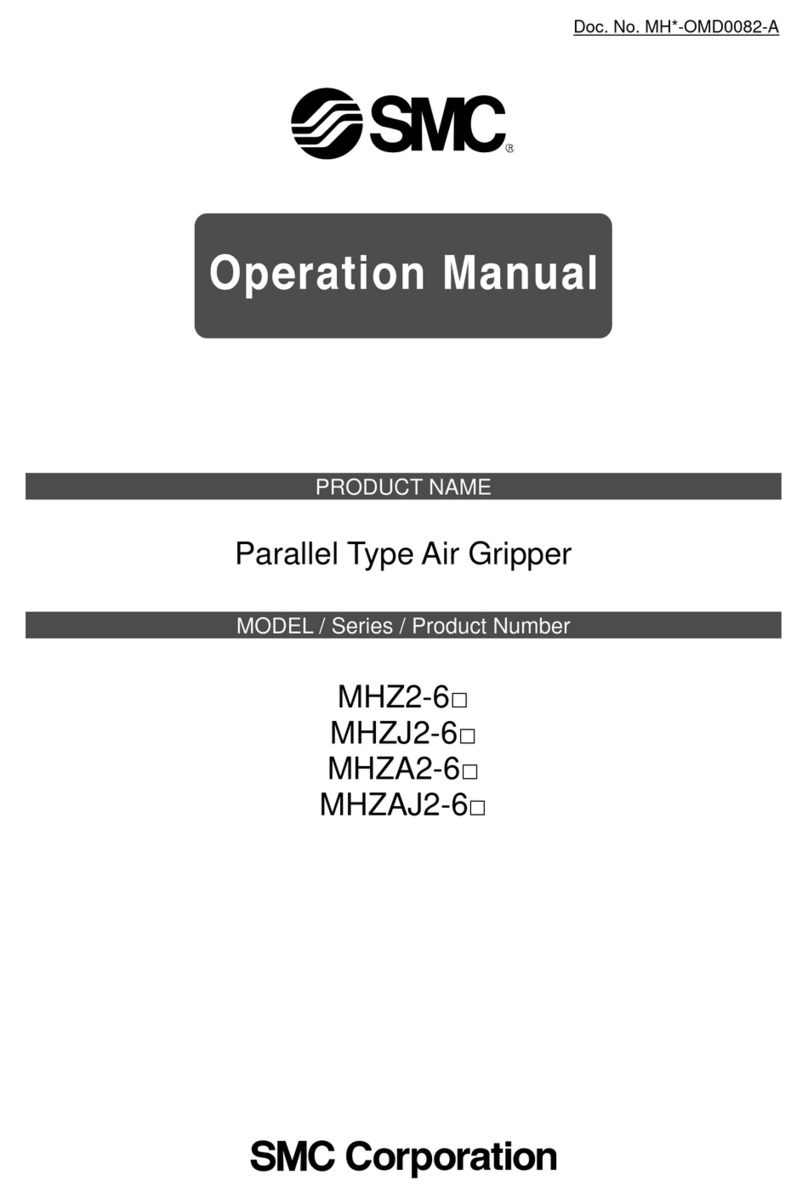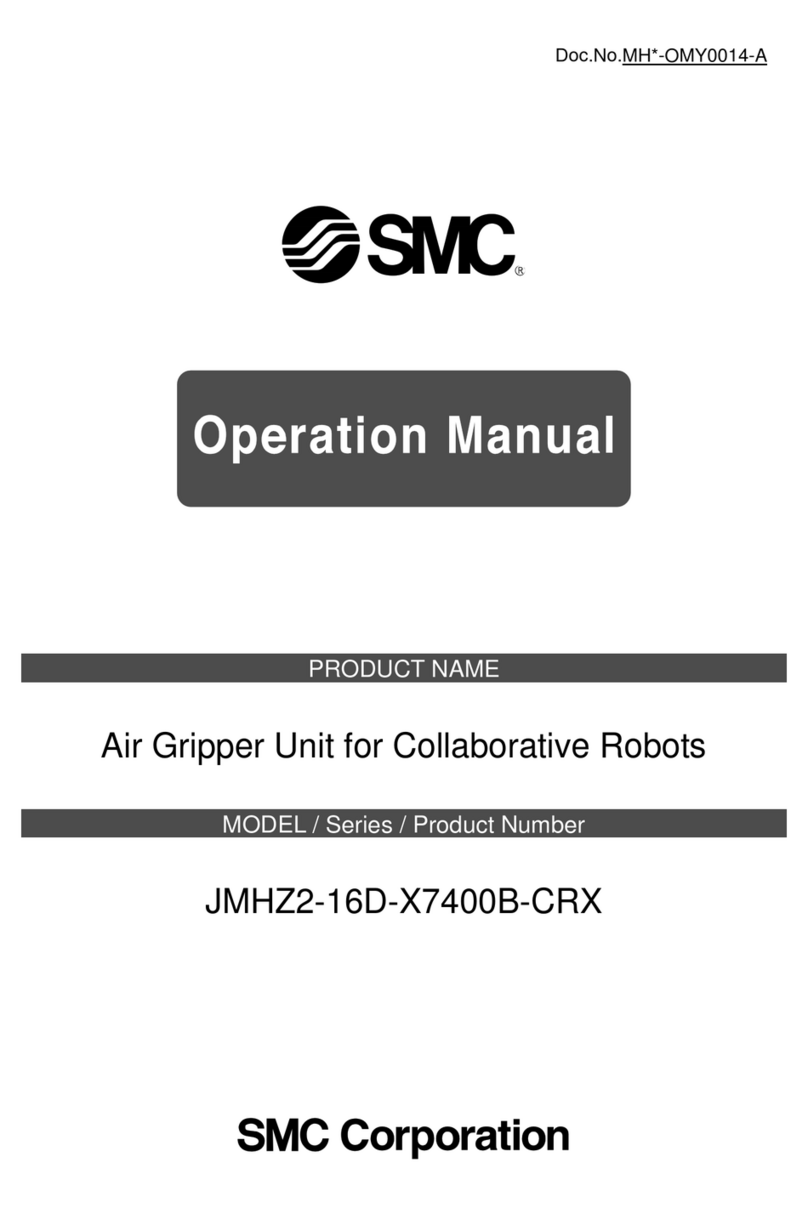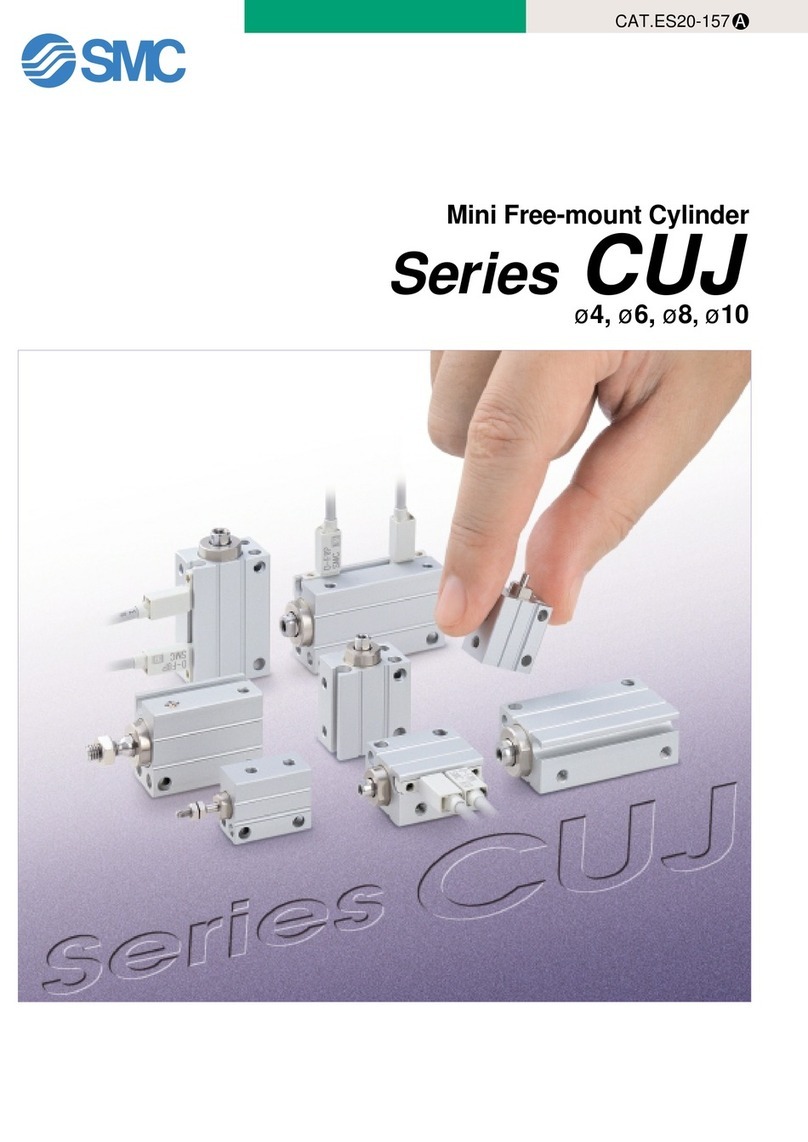
- 5 -
SGC200-OMM0002-F
Warning
Warning
Warning
Selection
4. Air quality
1) Use clean air.
Do not use compressed air that contains chemicals,
synthetic oils including organic solvents, salt or corrosive
gases, etc., as it can cause damage or malfunction.
2) Install air filters.
Install air filters close to valves on the upstream side. A
filtration degree of 5μm or less should be selected.
3) Install an aftercooler or air dryer, etc.
Compressed air that contains excessive drainage may
cause malfunction of valves and other pneumatic equipment.
To prevent this, install an aftercooler or air dryer, etc.
4) If excessive carbon powder is generated, eliminate it by
installing mist separators on the upstream side of valves.
If excessive carbon powder is generated by the compressor,
itmay adhere to theinside of the valves and cause malfunction.
Refer to SMC’s Best Pneumatics catalogue for further details
on compressed air quality.
5. Ambient environment
Use within the operable ambient temperature range. Confirm
the compatibility between the product’s composition materials
and the ambient atmosphere. Be certain that the fluid used
does not touch the external surface of the product.
6. Countermeasures against static electricity
Take measures to prevent static electricity since some fluids
can cause static electricity.
7. Low temperature operation
1) The valve can be used in an ambient temperature down to
-5
o
C. However, take measures to prevent freezing or
solidification of impurities, etc.
2) When using valves for water application in cold climates,
take appropriate countermeasures to prevent the water from
freezing in tubing after cutting the water supply from the
pump, by draining the water, etc. When warming by a heater,
etc., be careful not to expose the coil portion to a heater.
High dew point temperatures coupled with low ambient
temperatures, and large flow rates can cause freezing.
Please implement measures such as maintaining body
temperatures or the installation of air dryers.
Mounting
1. If air leakage increases or equipment does not
operate properly, stop operation.
After mounting is completed, perform a suitable function test to
confirm correct mounting.
2.
Do not apply external force to the coil section.
When tightening the product, apply a wrench or other tool to
the outside of the piping connection parts.
3.
Mount a valve with its coil position upwards
vertically, not downwards.
If the product is installed vertically downward, foreign matter
such as debris in the coolant will accumulate in the plate
assembly, shortening the life of the product.
Mounting
4.
Do not warm the coil assembly with a heat
insulator, etc.
Use tape, heaters, etc., for freeze prevention on the piping and
body only. Heating the coil may burn it out.
5.
Secure with brackets, except in the case of
steel piping and copper fittings.
6.
Avoid sources of vibration, or adjust the arm
from the body to the minimum length so that
resonance will not occur.
7. Painting and coating
Warnings or specifications printed or labelled on the product
should not be erased, removed or covered up.
Piping
1.
Preparation before piping
Before piping is connected, it should be thoroughly blown out
with air (flushing) or washed to remove chips, cutting oil and
other debris from inside the pipe.
Install piping so that it does not pull, press, bend or apply other
forces on the valve body.
2.
Wrapping of pipe tape
When screwing piping or fittings
into ports, ensure that chips from
the pipe threads or sealing material
do not enter the piping.
Furthermore, when pipe tape is
used, leave 1.5 to 2 thread ridges
exposed at the end of the threads.
3.
Avoid connecting ground lines to piping, as
this may cause electric corrosion of the system.
4.Tighten piping with the proper tightening torque.
When attaching piping to valves, tighten with the proper
tightening torque shown below.
Tightening Torque for Piping (For coolant valve)
Connection thread Proper tightening torque
(
((
(N・
・・
・m)
Rc1/8 7 to 9
Rc1/4 12 to 14
Rc3/8 22 to 24
Rc1/2 28 to 30
Rc3/4 45 to 50
Rc1 65 to 70
Rc1 1/4 80 to 90
Rc1 1/2 100 to 110
Rc2 140 to 150
5.
Connection of piping to products
When connecting piping to a product, refer to its operation
manual to avoid mistakes regarding the supply port, etc.
Caution
SGC / SGH Series
Coolant Valve / Precautions 2
